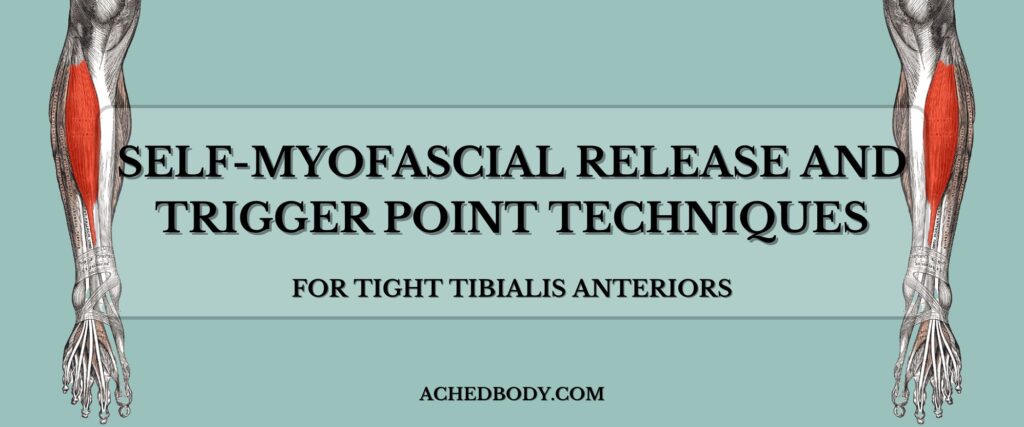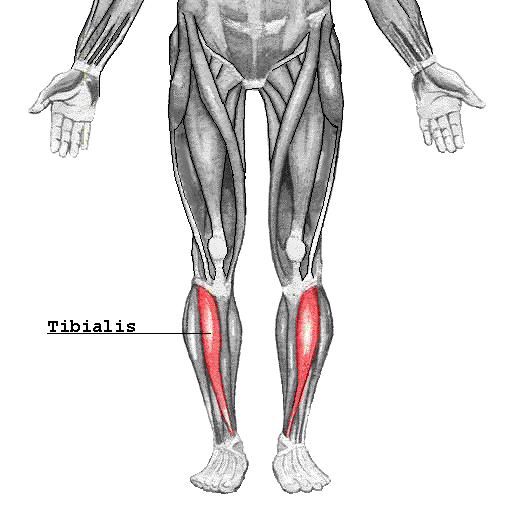

Tibialis Anterior Trigger Point Techniques
Tightness in the tibialis anterior sucks.
When this muscle is under constant strain, it can be annoying or straight up debilitating.
Fortunately, I have the best stretch for your tibialis anterior here, which pairs well with this article because,
In this article I will give you the proven methods for targeting these trigger points, providing you with a step-by-step guide to reduce pain and improve overall function.
Let’s get into it.
Understanding Trigger Points
Trigger points are small areas within a muscle where the fibers have become stuck in a contracted position.
It is usually the result of overuse, injury, or repetitive strain and over time, these knots can disrupt the normal function of the tibialis anterior.
This can lead to a lot of issues like altered gait patterns and pain in your ankles, shins and other muscles.
Learn more about the history of trigger point therapy here.
Identifying Trigger Points in the Tibialis Anterior
I tend to find the tight spots best when I am using a ball on the ground. I go over it in this video:
To self-assess, gently roll up and down the leg while also using side-to-side movements guided by your hand (as shown in the video).
You’ll notice the tender spots, I promise. Just make sure you aren’t rolling too low on the tendons or too far to the inside on your shin bone (tibia).
P.S. I show the good spots and bad spots in this video!
Self-Myofascial Release Techniques
Once you’ve pinpointed the trigger points, it’s time to use these techniques. Make sure you have a good foam roller, massage ball, or lacrosse ball. You can find the best myofascial release tools here with my ultimate bodywork tool guide.
Here’s a step-by-step guide on how to trigger point your anterior tibialis:
FYI – I explain these much deeper at the beginning of my ultimate guide to trigger point therapy page.
Roll Along And Across The Belly
These are the best ways to find the tight spots and trigger points you have.
Use the massage ball to roll up and down the muscle belly slowly.
The muscle belly is just another name for the meat of the muscle. It’s where the bulk of the contraction takes place and where the adhesions will be (for the most part).

Rolling across the muscle, as I show in the video, is also very effective. Use your hand to guide the leg in the movement. I also love doing this to warm up before runs and long days on my feet!
Pin The Muscle
Once you find the tightest spots, pinning the muscle, or the next technique, is the best thing to do.
Using direct pressure inhibits sensors in the muscle and will break up the muscle fibers that are stuck in a contracted position.
The goal is to work your way up to a 30 second pause with deep breaths. I like to do a few rounds in similar spots and sometimes, I will add more pressure with my hand each round.
NOTE: Don’t overdo it because you don’t want to damage the tissue.
Pin And Stretch
The last technique I use for this muscle is known as the pin and stretch method.
It builds on the pin method by combining it with movement.
First, press firmly on the trigger point to “pin” the muscle in place. Then, gently move the surrounding joint—in this case, the ankle—by “plantar flexing” or extending it.
This dual action will stretch the muscle fibers that are stuck while being pressured, which helps get rid of muscle adhesions!
In addition to these methods, rolling techniques are useful, but I have found that it is difficult to do well on the anterior tibialis.
This is just because the tibia is so easy to hit accidentally and you don’t want to bruise it.
Integrating Stretching with Trigger Point Therapy
Trigger pointing your anterior tibialis is already going to help significantly, but I would also recommend stretching the muscle for better results.
Make it a part of your warm-up routine to get lasting changes and try trigger pointing before stretching to get the most benefit out of it.
That sequence helps the muscle relax the best and prevents re-tightening.
When to Seek Professional Help
Remember, gradual progress is way better than smashing your muscle and damaging it by going too hard!
Take your time and pay attention to the way you feel after each session. If you’re sore, you went too hard.
If you keep experiencing pain in your shins or have extreme persistent pain that does not improve with regular trigger point therapy, it may be time to consult a healthcare professional or a physical therapist.
They can provide a detailed assessment and recommend advanced treatments, including targeted manual therapy or imaging studies to rule out more serious conditions.
Need More Info?
Targeting trigger points in the tibialis anterior using direct pressure, the pin and stretch method, and rolling techniques can provide significant relief from pain and improve muscle function.
If you want to know how to do this for the rest of your body, check out my ultimate guide to trigger point therapy and let me know if you have any questions in the comments below!
Good luck!
-Nick